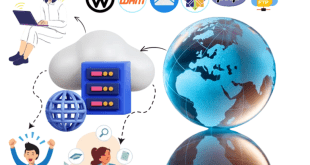Short for Light Fidelity, Li-Fi refers to the technology of using light to transfer data between devices. While Wi-Fi (Wireless Fidelity) has become the mainstay of wireless communications in the present era, Li-Fi’s full potential is yet to be unlocked. While Wi-Fi utilizes radio waves to transmit data, Li-Fi uses visible light, infrared and ultraviolet light to achieve data communications. To better understand Li-Fi, here’s a quick overview of its various practical uses and benefits.
Hack proof: As compared to Wi-Fi signals that can pass through walls, Li-Fi cannot cross such physical barriers. So, if you are using Li-Fi, your communications will be safer inside a room. Nobody from outside will be able to intercept your communications. In comparison, Wi-Fi signals can travel through barriers and face the risk of getting compromised.
High data transfer speed: Your home Wi-Fi can transfer data up to 300 mbps with the 2.4GHz band and around 430 mbps with the 5GHz band. This may be quite fast, but you will be surprised to know that Li-Fi can be even faster. In laboratory tests, researchers have been able to reach data transfer speed of more than 224 gbps using Li-Fi. Even if we can achieve 10% of this speed in a home environment, it would still be many times faster than Wi-Fi.
Zero radiation risk: As you may be aware, all Wi-Fi devices emit radiation, which can be harmful to our body. In comparison, Li-Fi utilizes visible light from the electromagnetic spectrum, which does not pose any health risks.
Underwater exploration: At present, unmanned underwater explorations have to rely on long wires for communications, as radio waves are unable to work inside water. This limits their usefulness and effectiveness. Li-Fi can work as a better alternative, as light can travel up to 1,000 meters inside water. Li-Fi can be used to guide remotely operated vehicles (ROVs) for underwater exploration.
Connect IoT devices: Your home in the future will be a place where all your appliances, gadgets, computers and other digital machines will be interconnected. Li-Fi can provide a safe and convenient way to connect these devices.
Limitations of Li-Fi
As of now, Li-Fi is capable at working only at close range. Moreover, it cannot pass through physical objects that block light.
Li-Fi is great for hobbyists, as the technology can be made to work in our homes with the use of easily available components such as LED light, card-sized solar panel, resistor, couple of wires and battery. As researchers work to overcome the limitations of Li-Fi, we could see Li-Fi emerging as a popular choice for wirelesscommunications in the future.
 Newspatrolling.com News cum Content Syndication Portal Online
Newspatrolling.com News cum Content Syndication Portal Online






